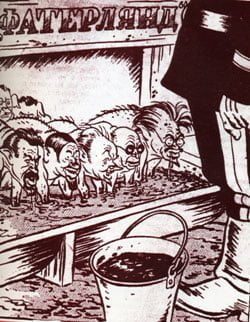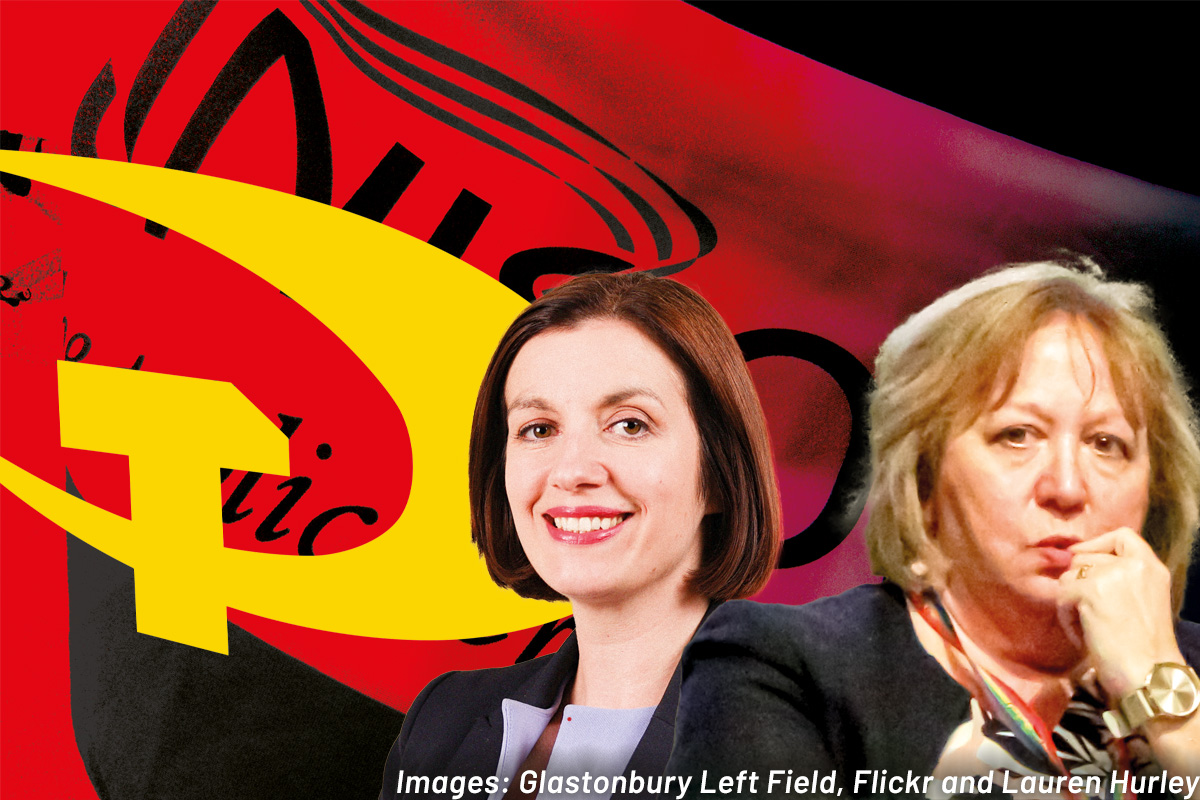 Boris Yefimov died this month at the grand old age of 108. Yefimov
Boris Yefimov died this month at the grand old age of 108. Yefimov
was Stalin’s loyal cartoonist, who sold his soul to the devil by
caricaturing (and justifying) every twist and turn of the Stalinist
bureaucracy.
After studying in Kharkov’s art school he moved to Moscow in 1922,
where his brother helped him find a job at Izvestiya. In the early
period of the Russian Revolution he originally admired Trotsky. Trotsky
recognized his talent and had prefaced a book of early cartoons.
This simple act under Stalin would have certainly meant the death
penalty. Many had perished for far less under Stalin’s regime. In fact,
Yefimov’s own brother, Mikhail, was arrested in 1938 on his return from
covering the Spanish civil war and executed in 1940 as an “enemy of the
people”. Boris Yefimov, who by now had prostituted himself before
Stalin, would feature such “enemies of the people” as grotesque
traitors in his lurid cartoons. It was a spineless capitulation to save
his skin. Yefimov eagerly accommodated himself to Stalin’s political
counter-revolution. Like so many artists and intellectuals under
Stalin, he crawled on his belly before the bureaucratic reaction, which
had betrayed the October Revolution.
Yefimov was largely a self-taught cartoonist, with a talent in his
cartoons for expressing Stalin’s requirements in attacking his enemies.
Stalin put these talents to good use. Fearing his own life, Yefimov
groveled before Stalin’s every whim. He was aware of the fact that the
past praise from Trotsky could lead to a death sentence, so he chose to
prove his loyalty to Stalin by producing a flow of cartoons for use by
the regime.
His usefulness guaranteed his life, which spanned the years of
tsarism, the October Revolution, Stalinism, post-Stalinism, Mikhail
Gorbachev’s reforms, and the collapse of the USSR. He even lived under
the newly-born Russian mafia capitalism.
His attacks on Trotsky, who he had once lauded, were particularly
unsavory. He expressed in cartoon form the regime’s anti-Semitism,
particularly in his portrayal of Trotsky, as well as linking him in the
Moscow Trials to the Nazis. It mattered nothing that Yefimov was
himself a Jew. He praised and worshipped Stalin while he was alive, and
later, after his death, despised him. He praised the Soviet Union but
later turned his back on it.
In 1938, his talents were used to justify the Moscow Trials and the
murder of leading Bolsheviks. He produced a disgusting caricature of
Trotsky, Rykov, Bukharin and others as pigs wallowing in a trough
entitled ‘Vaterland’, fed with pigswill by a Nazi officer, to coincide
with the third Moscow Trial. In another cartoon called ‘Terror’,
Trotsky is depicted on a playing card with a fascist gunman.
In
1947, Stalin ordered Yefimov to do an anti-American cartoon, to signal
the fact that he was breaking the uneasy alliance with the western
powers. Having rapidly finished the cartoon – as delay could have meant
the death penalty – he was summoned the following day to the Central
Committee. There he had found that Stalin had altered the caption.
Yefimov kept the cartoon on a wall in his flat. After Stalin died
Yefimov said “he was a villain, he murdered many people, a dreadful
man. But still, a certain human logic wins out. He is also the person
who guaranteed me my life, my freedom, my work”.
In an interview on his 100th birthday, Yefimov said that, “a truly
artistic caricature conveys the character and the conduct of the person
it depicts a cartoon instantaneously gives you both the event and
commentary about that event. That is the nature of a cartoon: fast,
funny and persuasive”. He forgets the role his cartoons played in the
witch-hunt against the Trotskyists who defended the ideas of the
October Revolution. He was at the service of the bureaucratic
counter-revolution.
He looked back on his work as necessary, even useful. “Propaganda”,
he noted, “was born with the Soviet regime in 1917, and through all the
70 years of its existence, propaganda helped to consolidate the
society, held it in some kind of strong, unified community; and when
the Soviet Union disappeared, there was a kind of emptiness”. What
Yefimov prefers to ignore is that there was a river of blood that
separated the regime of Stalin from that of Lenin. There was no
“continuity” but a sharp and brutal break, in which all the genuine
Bolsheviks were physically eliminated.
Propaganda under Lenin was one things; it was for genuine socialism,
workers’ democracy and the world revolution. Under Stalin it was
against all this and for the defence of the privileged bureaucracy that
had usurped power.
For services rendered Yefimov received two Stalin prizes and, near
the end of his life, the honorary title of Chief Artist of Izvestiya.
Married twice, with one son, he died a few days after his 108th
birthday, on October 1.






